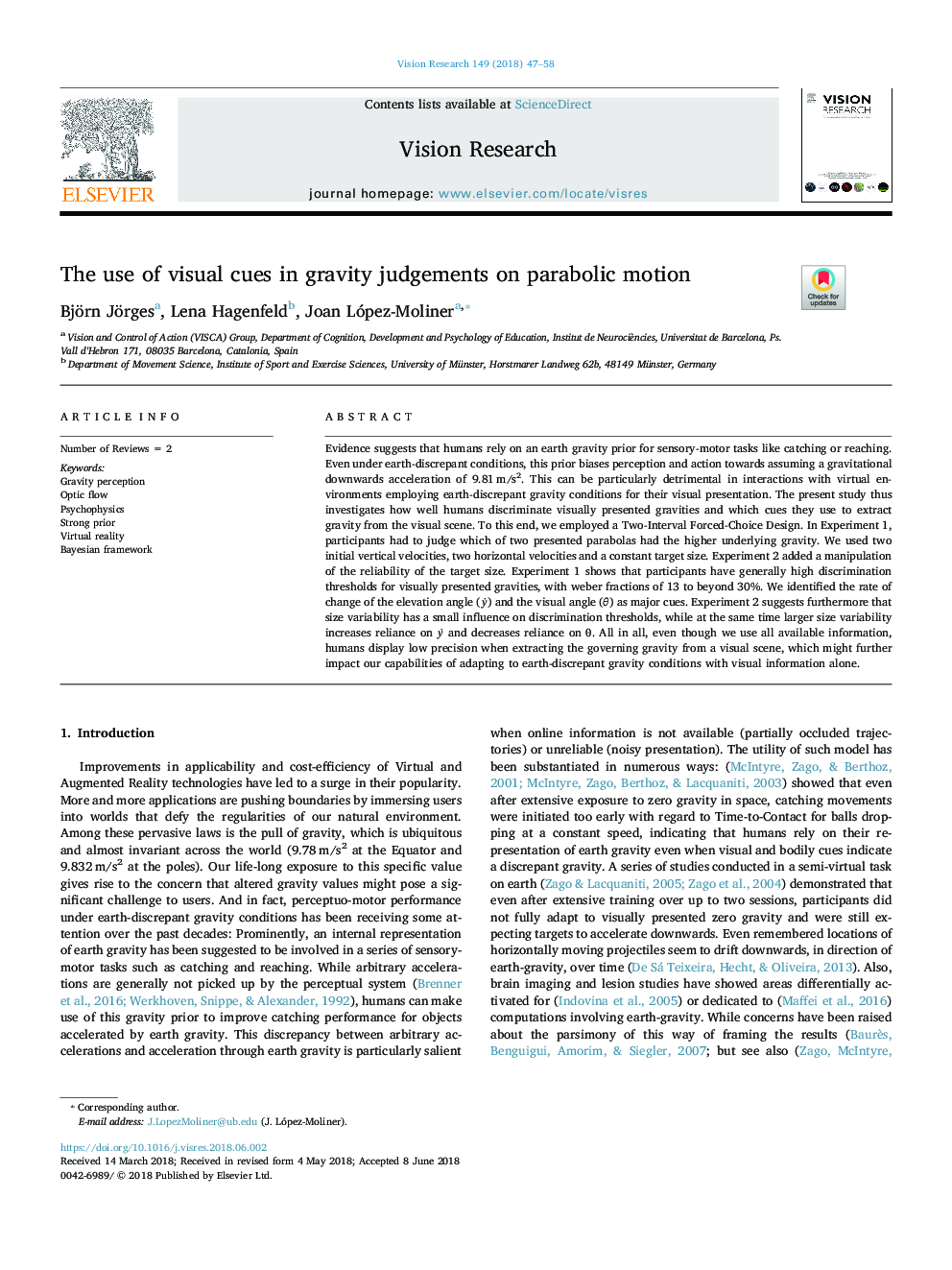| Article ID | Journal | Published Year | Pages | File Type |
|---|---|---|---|---|
| 8795284 | Vision Research | 2018 | 12 Pages |
Abstract
Evidence suggests that humans rely on an earth gravity prior for sensory-motor tasks like catching or reaching. Even under earth-discrepant conditions, this prior biases perception and action towards assuming a gravitational downwards acceleration of 9.81â¯m/s2. This can be particularly detrimental in interactions with virtual environments employing earth-discrepant gravity conditions for their visual presentation. The present study thus investigates how well humans discriminate visually presented gravities and which cues they use to extract gravity from the visual scene. To this end, we employed a Two-Interval Forced-Choice Design. In Experiment 1, participants had to judge which of two presented parabolas had the higher underlying gravity. We used two initial vertical velocities, two horizontal velocities and a constant target size. Experiment 2 added a manipulation of the reliability of the target size. Experiment 1 shows that participants have generally high discrimination thresholds for visually presented gravities, with weber fractions of 13 to beyond 30%. We identified the rate of change of the elevation angle (yÌ) and the visual angle (θ) as major cues. Experiment 2 suggests furthermore that size variability has a small influence on discrimination thresholds, while at the same time larger size variability increases reliance on yÌ and decreases reliance on θ. All in all, even though we use all available information, humans display low precision when extracting the governing gravity from a visual scene, which might further impact our capabilities of adapting to earth-discrepant gravity conditions with visual information alone.
Related Topics
Life Sciences
Neuroscience
Sensory Systems
Authors
Björn Jörges, Lena Hagenfeld, Joan López-Moliner,
